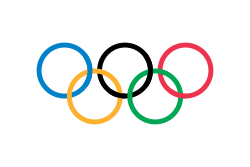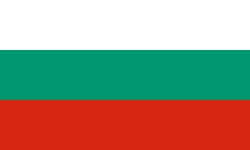Thailand i olympiska sommarspelen 1992
| ||||||
| Kommitté | Thailands Olympiska Kommitté | |||||
|---|---|---|---|---|---|---|
| Olympiska sommarspelen 1992 i Barcelona | ||||||
| Deltagare | 46 deltagare i 9 grenar | |||||
| ||||||
| ||||||
| Thailand i olympiska sommarspelen | ||||||
| 1952 • 1956 • 1960 • 1964 • 1968 • 1972 • 1976 • 1980 • 1984 • 1988 • 1992 • 1996 • 2000 • 2004 • 2008 • 2012 • 2016 • 2020 | ||||||
| Thailand i olympiska vinterspelen | ||||||
| 2002 • 2006 • 2010 • 2014 • 2018 • 2022 | ||||||
Thailand deltog i de olympiska sommarspelen 1992 med en trupp bestående av 46 deltagare, och totalt blev det ett brons.[1]
Medalj
 Brons
Brons
Badminton
Herrar
| Spelare | Gren | 32-delsfinal | Sextondelsfinal | Åttondelsfinal | Kvartsfinal | Semifinal | Final | Placering |
|---|---|---|---|---|---|---|---|---|
| Motståndare Poäng | Motståndare Poäng | Motståndare Poäng | Motståndare Poäng | Motståndare Poäng | Motståndare Poäng | |||
| Teeranun Chiangta | Herrsingel | W(15-2,15-12) | W(11-15,15-3,15-3) | L(7-15,8-15) | Gick inte vidare | |||
| Sompol Kukasemki | Herrsingel | W(16-18,15-12,17-16) | L(15-11,15-2) | Gick inte vidare | ||||
| Siripong Siripul Pramote Teerawiwatana | Herrdubbel | i.u. | Stellan Österberg (SWE) W (18-15,15-5) | Tian Bingyi (CHN) L (15-9,8-15,8-15) | Gick inte vidare | |||
Damer
| Spelare | Gren | 32-delsfinal | Sextondelsfinal | Åttondelsfinal | Kvartsfinal | Semifinal | Final | Placering |
|---|---|---|---|---|---|---|---|---|
| Motståndare Poäng | Motståndare Poäng | Motståndare Poäng | Motståndare Poäng | Motståndare Poäng | Motståndare Poäng | |||
| Somharuthai Jaroensiri | Damsingel | W(11-3,11-0) | W(8-11,12-9,11-4) | W(5-11,11-6,12-10) | L(6-11,1-11) | Gick inte vidare | ||
| Pornsawan Plungwech | Damsingel | W(11-3,12-9) | W(12-9,2-11,12-9) | L(4-11,2-11) | Gick inte vidare | |||
| Ladawan Mulasartsatorn Piyathip Sansaniyakulvilai | Damdubbel | i.u. | Vandanah Seesurun (MRI) W (18-15,15-5) | Shim Eun-jung (KOR) L (8-15,6-15) | Gick inte vidare | |||
Boxning
- Pramuansak Phosuwan
- Vichai Khadpo
- Första omgången — förlorade mot
 Mario Loch (GER), RSCI-2 (00:16)
Mario Loch (GER), RSCI-2 (00:16)
- Första omgången — förlorade mot
- Chatree Suwanyod
- Somluck Kamsing
- Första omgången — besegrade
 Michael Strange (CAN), 11:9
Michael Strange (CAN), 11:9 - Andra omgången — förlorade mot
 Faustino Reyes (ESP), 15:24
Faustino Reyes (ESP), 15:24
- Första omgången — besegrade
- Arkhom Chenglai
- Första omgången — besegrade
 Yusef Khateri (IRI), 13:7
Yusef Khateri (IRI), 13:7 - Andra omgången — besegrade
 Nicodemus Odore (KEN), 13:10
Nicodemus Odore (KEN), 13:10 - Kvartsfinal — besegrade
 Vitalijus Karpaciauskas (LTU), 9:6
Vitalijus Karpaciauskas (LTU), 9:6 - Semifinal — förlorade mot
 Michael Carruth (IRL), 4:11 →
Michael Carruth (IRL), 4:11 →  Brons
Brons
- Första omgången — besegrade
- Chalit Boonsingkarn
- Första omgången — besegrade
 Lucas Franca (BRA), 16:2
Lucas Franca (BRA), 16:2 - Andra omgången — förlorade mot
 Orhan Delibaş (NED), RSCI-2 (01:45)
Orhan Delibaş (NED), RSCI-2 (01:45)
- Första omgången — besegrade
Friidrott
- Visut Watanasin
- Heat — 10,72 (→ gick inte vidare)
- Seaksarn Boonrat
- Aktawat Sakoolchan
Herrarnas 4 x 100 meter stafett
- Kriengkrai Narom, Seaksarn Boonrat, Niti Piyapan och Visut Watanasin
Herrarnas 4 x 400 meter stafett
- Athiaporn Koonjartong, Yuthana Thonglek, Sarapong Kumsup och Aktawat Sakoolchan
- Heat — 3:08,00 (→ gick inte vidare)
- Chanond Kenchan
- Heat — 50,60 (→ gick inte vidare)
- Ratjai Sripet
- Nednapa Chommuak
- Noodang Phimphoo
Damernas 4 x 100 meter stafett
- Nednapa Chommuak, Reawadee Srithoa, Ratjai Sripet och Pornpim Srisurat
Damernas 4 x 400 meter stafett
- Saleerat Srimek, Sukanya Sang-Nguen, Srirat Chimrak och Noodang Phimphoo
- Sukanya Sang-Ngeun
- Heat — 2:09,94 (→ gick inte vidare)
- Reawadee Srithoa
- Heat — 58,80 (→ gick inte vidare)
- Jaruwan Jenjudkarn
- Kval — 1,75 m (→ gick inte vidare)
Judo
- Prateep Pinitwong
- Supatra Yompakdee
Segling
- Saard Panyawan
- Slutlig placering — 241,0 poäng (→ 26:e plats)
- Amara Wichithong
- Slutlig placering — 215,0 poäng (→ 20:e plats)
Tennis
- Duangchan Suvimol och Benjamas Sangaram
Referenser
- ^ http://www.sports-reference.com/olympics/countries/THA/summer/1992/ Arkiverad 14 juli 2011 hämtat från the Wayback Machine. Sports-reference.com (engelska)
| ||||||||||
Media som används på denna webbplats
The national flag of Kingdom of Thailand; there are total of 3 colours:
- Red represents the blood spilt to protect Thailand’s independence and often more simply described as representing the nation.
- White represents the religion of Buddhism, the predominant religion of the nation
- Blue represents the monarchy of the nation, which is recognised as the centre of Thai hearts.
Flag of Jamaica. “The sunshine, the land is green, and the people are strong and bold” is the symbolism of the colours of the flag. GOLD represents the natural wealth and beauty of sunlight; GREEN represents hope and agricultural resources; BLACK represents the strength and creativity of the people. The original symbolism, however, was "Hardships there are, but the land is green, and the sun shineth", where BLACK represented the hardships being faced.
Olympic Movement flag
Proportions 2:3, created 1913, adopted 1914, first used 1920.
- Colors as per http://fairspielen.de/wp-content/uploads/2015/09/Annexe-3-Olympism_and_the_Olympic_Symbol_-_Principles_and_Usages_Guide-1.pdf
- blue: PMS 3005C
- yellow: PMS 137C
- black: PMS 426C
- green: PMS 355C
- red: PMS 192C
- Dimensions of the rings taken from http://fairspielen.de/wp-content/uploads/2015/09/Annexe-3-Olympism_and_the_Olympic_Symbol_-_Principles_and_Usages_Guide-1.pdf
Kanadas flagga, införd 1965; denna version med Pantone‐nyanser. Nuvarande utformning ersatte den tidigare kanadensiska Red Ensign.
Flag of Iran. The tricolor flag was introduced in 1906, but after the Islamic Revolution of 1979 the Arabic words 'Allahu akbar' ('God is great'), written in the Kufic script of the Qur'an and repeated 22 times, were added to the red and green strips where they border the white central strip and in the middle is the emblem of Iran (which is a stylized Persian alphabet of the Arabic word Allah ("God")).
The official ISIRI standard (translation at FotW) gives two slightly different methods of construction for the flag: a compass-and-straightedge construction used for File:Flag of Iran (official).svg, and a "simplified" construction sheet with rational numbers used for this file.
Flag of South Korea from 21 February 1984 to 15 October 1997, when the exact colors were specified into their shades.
bendera Indonesia
Författare/Upphovsman: B1mbo, Licens: CC BY-SA 2.5
Drawing of a bronze medal, based on Olympic rings.svg.


























